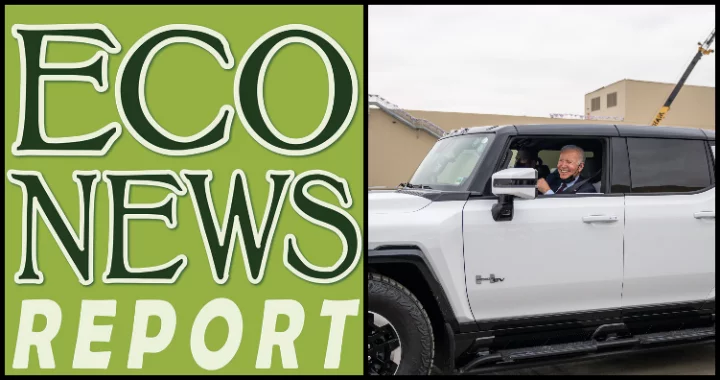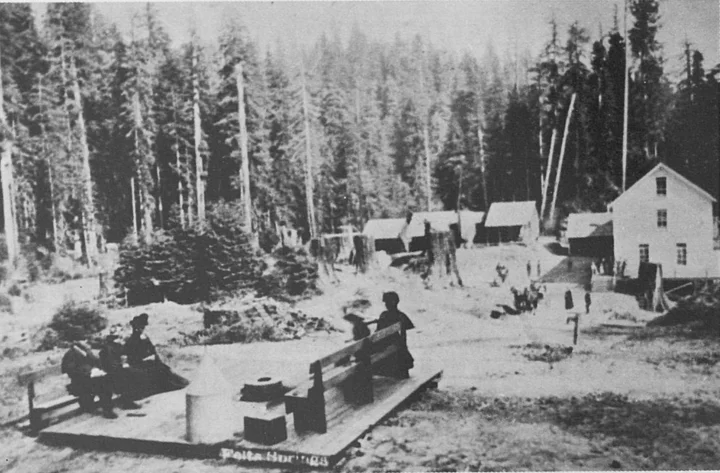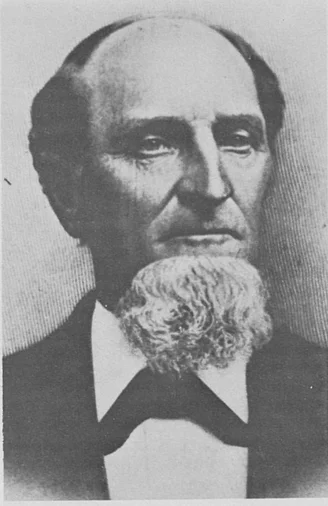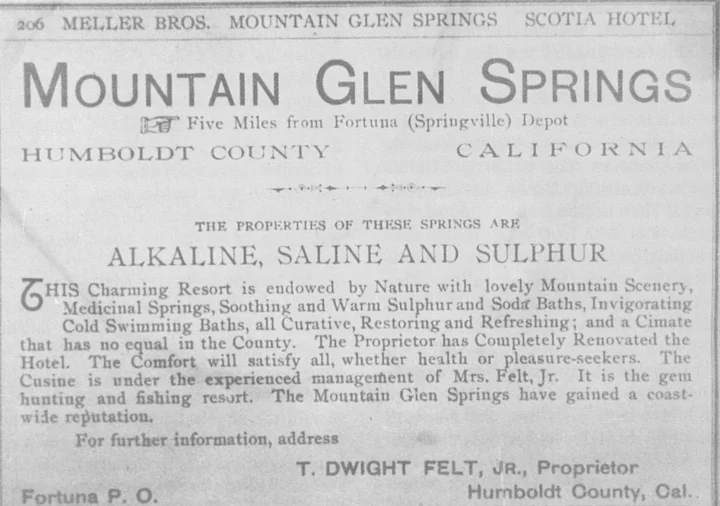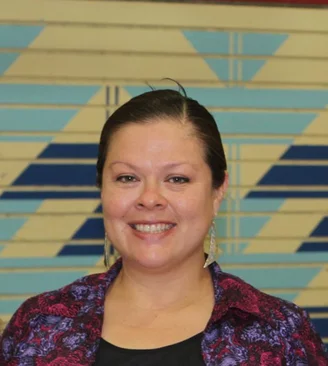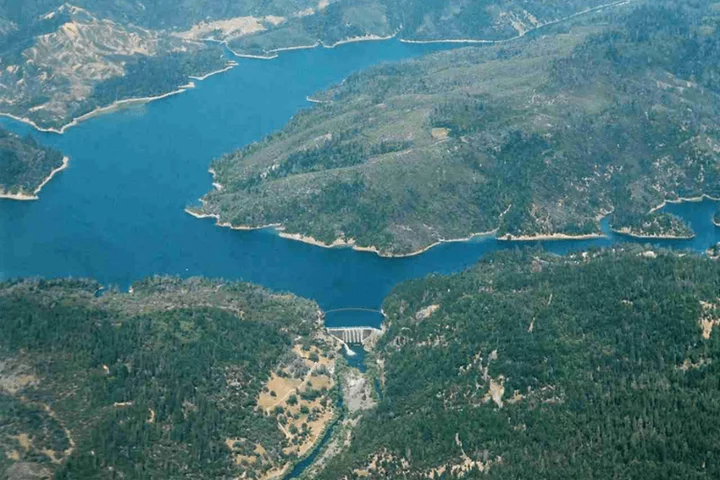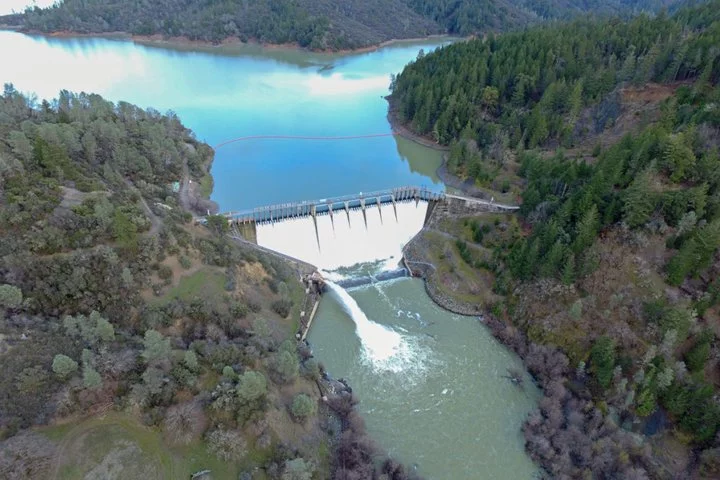GROWING OLD UNGRACEFULLY: Ensoulment and Abortion
Barry Evans / Sunday, March 19, 2023 @ 7 a.m. / Growing Old Ungracefully
As I understand it, the reason most anti-abortion activists take the stand they do is that they believe abortion is murder. And that is based on their notion of “ensoulment,” that life begins at conception when a bunch of rapidly-dividing pre-blastocyst cells (the zygote) is endowed with a soul, and is therefore a person. (After seven days, the excitement settles down into a more organized clump, the blastocyst.) The great majority of those supposedly soul-encrusted cells die without any human intervention: many fail to glom onto the wall of the uterus, while of those that do, about half are miscarried, without anyone being any the wiser. That is, most of the supposedly ensouled zygotes never make it to first base. But still, a few do, leading to the idea that to willfully abort a growing set of cells anytime after conception is tantamount to murder.
(Incidentally, talking about a “moment of conception” is a misnomer, since fertilization takes about 24 hours.)
If “ensoulment at conception” to justify a pro-life stance sounds a bit ad hoc — it’s because it is. It’s certainly not found in the Bible, which is understandable, given that two thousand and more years ago, pregnancy wasn’t understood as the result of fertilization of a female egg by a male spermatozoon. Aristotle, for instance, thought that the only role for the female in the process of creating new life was to provide a nest for the developing embryo — a man’s semen was all she needed. He, and presumably anyone influenced by Greek philosophy, certainly believed in ensoulment, except it happened later: 40 days after conception for male fetuses and 90 days after conception for female fetuses.
If Christians are to fall back on the Bible to justify banning abortions, shouldn’t they be checking what it actually has to say about the start of life? Like, Genesis 2:7, which says it’s all about breath: “And the LORD God formed man from the dust of the ground, and breathed into his nostrils the breath of life; and man became a living soul.” Breath equates with life. Not coincidentally, this followed the ancient Greek concept of pneuma (breath), which held that life only starts when breathing starts…nine months after conception.
FWIW, wise old Saint Augustine, who had clearly thought this through 1700 years ago, wrote, “I have not been able to discover in the accepted books of Scripture anything at all certain about the origins of the soul.”
Rather than falling back on religion (not as found in the Bible but as taught by the Catholic church hundreds of years later) shouldn’t we be facing the issue of abortion in the light of what we know now, not what was believed out of ignorance 2000 years ago? For instance:
- About 1 in 4 women in the US have had an abortion. Of those, 60% already have a child, half of whom have two or more children.
- 46% of those women who have abortions are single.
- Abortion isn’t generally seen as a form of birth control: for 58% of women getting an abortion, it’s their first one
- A sexually active woman who ends up with two children has to dodge nearly 30 pregnancies in her fertile lifetime if she wants to avoid having an abortion
- Women living below the poverty line account for half of all abortions in the US (the only country in the “first world” that doesn’t mandate paid family leave).
- Women want abortions for many reasons, beyond the more obvious ones of incest and rape, including: knowing they have mentally or physically compromised fetuses, economic hardship, failed or destructive relationships, health risks, and taking care of other children.
- Legislating against abortion won’t end it, based on pre-Roe vs. Wade history. It will only make it more dangerous.
- 61% of Americans say abortion should be legal, according to a 2022 Pew survey.
- Oh, and no one’s actually seen a soul, in case that makes any difference.
Unfortunately, the people making the anti-abortion laws are almost entirely white, well-off men far removed from the plight of a desperate woman who is often poor and unmarried. They’re also ignorant, as when Texas governor Greg Abbott boasted that rape would be eliminated in his state, so abortions wouldn’t be necessary. Which reminded me of this: “If it’s a legitimate rape, the female body has ways to try to shut that whole thing down.” (Todd Akin, Missouri Republican and Senate candidate.)
Legitimate rape? Sigh.
BOOKED
Today: 6 felonies, 8 misdemeanors, 0 infractions
JUDGED
Humboldt County Superior Court Calendar: Today
CHP REPORTS
Central Ave / Heartwood Dr (HM office): Traffic Hazard
ELSEWHERE
Governor’s Office: Governor Newsom slams Trump’s “Con Job” fuel economy standards proposal
Lumberjack News: How to make burnout suck less during finals
Governor’s Office: California announces new online portal to report misconduct by federal agent
RHBB: HCSO Seeks Public’s Help Locating 16-Year-Old Shayde Kelley of Salyer
THE ECONEWS REPORT: Solving The Climate Crisis Requires More Than Just Electrifying Your Pick-up Truck
The EcoNews Report / Saturday, March 18, 2023 @ 10 a.m. / Environment
Joe Biden pilots an electric Humvee. Photo: White House. Public domain.
This week, Colin Fiske of Coalition for Responsible Transportation Priorities and Matt Simmons of EPIC join the show to talk about why the race to electrify cars and trucks isn’t a one-size-fits-all solution to our climate woes. More - and larger - electric vehicles mean more mining lithium for batteries, which comes with social and environmental costs. And the more vehicles on our streets, the more dangerous those streets are for people walking and biking. One solution is building more housing close to where people work, shop, and study, so that we can free ourselves from auto dependency.
For more info:
THE HUMBOLDT HUSTLE: Care for Some Mushrooms in Your Hot Chocolate? This Local Entrepreneur is Betting That You Will
Eduardo Ruffcorn-Barragán / Saturday, March 18, 2023 @ 7:15 a.m. / The Humboldt Hustle
Jennifer May demos the 14 Sacred Mushrooms at Murphy’s. Photos courtesy 14 Sacred Mushrooms.
Mushrooms.
Some people hate them because they taste earthy and spongy. Other people love them for the same reasons. Jennifer May, 45, loves to make them into a powder, mix them with spices and cacao, and sell it for you to mix into hot drinks. She calls it 14 Sacred Mushrooms.
Originally from Pennsylvania, May came to Humboldt County for the first time when she was 22 years old. It was on a camping trip where she realized that she needed to leave the East Coast and seek out the next step in her path. It took her two months and following the band Phish on tour to get her here.
May originally had the intention of returning back east, but quickly found a sense of community. She started a gig at the Bayshore Mall, where she met her husband, and decided to stay for a while. After a few months of dating, it became difficult to stay in the harsh Humboldt economy of the early 2000s, so they left.
Life took them away to Tahoe, Washington, and North Carolina as they began to have children. They did not believe they could ever return, but they still had ties here. Then 11 years ago, a few close friends began to renovate a house and invited May and her family. They could not resist so they returned with nothing but the clothes on their backs and two kids in tow.
“We had to live super simply,” May said.”It was some of the best years of our lives. We didn’t have a lot and we just played in the forest.”
Over the years, May did photography for Coastal Grove Charter School and provided child care, but naturally, kids grow up and things change. May’s experience here has thematically been, “a struggle.” Maybe the Humboldt Hustle in reality is the Humboldt Struggle.
For May, it came in two particular ways — her health and her finances.
She felt as though all of her focus was revolving around taking supplements so she began studying naturopathic medicine. She came across the book, Christopher Hobbs’s Medicinal Mushrooms: The Essential Guide: Boost Immunity, Improve Memory, Fight Cancer, Stop Infection, and Expand Your Consciousness and decided to go all in on mushrooms.
May found a farmer in Washington who grows, powders and sells the 14 different types of mushrooms she was looking for. She then began mixing and playing with ratios of spices, cacao and mushroom por until she found her ideal replacement for coffee — or, in some cases, as a supplement to it. She began to share her mushroom cacao blend with friends and people were responding well to it.
Then the struggle came in the form of veterinarian bills for the family dog, which they could not afford. Quickly, May decided to start a fundraiser where she would sell her mushroom cacao blends to pay for the bills. From that, 14 Sacred Mushrooms was born.
May
rented out a kitchen to package her mixes and started selling them out
of our local grocers, including Murphy’s Markets, Eureka Natural
Foods and North Coast Co-Op. You might find her at one of these
stores demo-ing her cacao blends or selling at our local farmers
markets. [CORRECTION: Oops, not at the Farmers’ Markets. Yet! — Ed.]
14 Sacred Mushrooms has already expanded to Andy’s Produce Market in Sebastopol, markets in Santa Rosa, and Shelton’s Natural Foods Market in Healdsburg. May has plans to launch a website to make it easier to find her product but for now, she has just started to use Instagram.
May often refers to the mycelium found in mushrooms. Mycelium is a root-like structure of a fungus consisting of a mass of branching or hyphae that grows underground but can also thrive in other places such as rotting tree trunks.
It looks like webbing, but for fungi.
May describes this webbing or networks of mycelium similarly to how she views Humboldt as a community — all interconnected and eager to thrive.
“Mushrooms are our allies and they have a lot to teach us,” May said.
HUMBOLDT HISTORY: Remembering the Opulence and Healing Powers of the Forgotten Mineral Springs Resort Behind Fortuna
Dr. Jack Irvine / Saturday, March 18, 2023 @ 7 a.m. / History
A general view of the Felt Springs resort and health spa near Fortuna. Photo: Peter Fassold, courtesy Clarke Museum. Taken from the November/December 1985 issue of the Humboldt Historian.
Dr. Theodore Dwight Felt was one of the pioneer settlers in Humboldt County and, with Jonathan Clark, was one of two physicians in practice in the early 1850s. Dr. Felt originally homesteaded in the Goose Lake Prairie (now Hydesville) area and for many years was closely associated with the development of that and neighboring towns.
In addition to the practice of medicine Dr. Felt played a prominent role in numerous community and commercial ventures. One of these projects which occupied his energies for a number of years was the development of Mt. Glen Springs, or Felt Springs, as it was often called, a resort-health spa situated near Fortuna and promoted primarily on the basis of the alleged medicinal properties of the waters located there.
The springs were discovered in 1874 on land obtained through a grant to Dr. Felt. Some men employed by him returned one day saying that they had found some unusual tasting water. Upon Dr. Felt’s personal investigation he found two large mineral springs lying in a basin formed by a slide on the south side of a ridge separating Salmon Creek and Strongs Creek five miles from the town of Rohnerville. This spot lies not far from the present Newberg Road.
Dr. Felt was impressed with the quality of the water and was quick to appreciate its commercial possibilities as evidenced by the following notice which appeared in the Humboldt Times Weekly of January 24, 1874: “Mineral Water - Probably the finest and best mineral springs at the present known in the State of California is that recently discovered in this county and owned by Dr. T.D. Felt of Rohnerville. It is said to contain medicinal and curative qualties such as no other mineral water possesses. Dr. Felt has sent Mr. Fruchlicht of our Corner Saloon several gallons of the waters from the spring where the sick and curious will do well to call and give it a try.”
Soon after, development had proceeded to the point where patients could visit and stay at the springs. In the Humboldt Times Weekly of May 23, 1874, the following was recorded: “Favorable Acting: Several persons, invalids, who have come in from Felt’s Mineral Springs after a stay there of two to three weeks, give the most favorable accounts of the beneficial results experienced in their own cases from the use of the waters of those springs. For rheumatic troubles the water seems to act like a charm. Dr. Felt will have his road to the spring completed in a few days when they can be reached without trouble or inconvenience. We understand likewise that he will proceed at once to erect suitable buildings for the accommodations of visitors.”
By 1876 the enterprise must have been successful, as Dr. Felt closed his practice in Rohnerville and moved to the springs. Individual cabins and a hotel for visitors were present at this time. Unfortunately, soon after his move, in May, 1876, a disastrous fire destroyed the hotel and damaged other buildings, fortunately with no loss of life but with a property loss estimated by Dr. Felt of $50,000. With characteristic vigor Dr. Felt immediately began the rebuilding of the resort. Later in that year a new project was added — the development of a piped water system to supply the town of Rohnerville. From the Daily Humboldt Times, July 18, 1876, this notice appeared: “Felt Mineral Springs: The work of conducting the water from Mountain Glen Springs to Rohnerville through pipes is being pushed through rapidly. The pipe is already laid from the springs to the edge of the timber near Rohnerville and will be carried to Felt’s Hotel in about a week. The pipe selected for the purpose is of the finest quality and is coated with asphaltum so that it will last for many years. After this work is completed Rohnerville will be “fixed,” having a regular system of water works for protection against fire and her hotel supplied with mineral water that cures the sick.”
This is the announcement that was placed in the Humboldt County Directory of 1890-91 after Dr. Felt’s son became manager of the resort.
Bad luck intervened, however, and another fire destroyed the recently reconstructed buildings. Perhaps depressed from this turn of events and certainly in need of funds. Dr. Felt now returned to the practice of medicine in Rohnerville. Mt. Glen Springs continued now under the direction of T.D. Felt, Jr., who rebuilt the property and managed the resort. Sporadically, mention of the springs appeared in the local papers, including this note in the Humboldt Times Weekly, 1877, which gave a chemical analysis of the waters and concluded: “…proving it to be one of the finest alterative and tonic compounds ever offered to the public.”
The most detailed account of the spring waters and of the resort is found in the Humboldt County Directory, 1890-1: “The waters in these springs, although in the same basin, prove, by analysis, to be very different. But one is as desirable as the other. The water differs in color also, one having a clay or milky appearance, while the other is perfectly clear. The gas rises in each at intervals of 3-4 minutes. The waters of these springs are used for different diseases…The water is pleasant to taste and of a decidedly saline flavor, or to be more thoroughly understood, like soda. At intervals of a few minutes an effusion of gas takes place, which bubbles quite furiously and then gradually subsides, almost ceasing. The gas seems to be of a chlorotic nature, having a faint greenish-blue flame when ignited. It gives no soot or sediment and leaves no odor and the gas would remain lighted the entire night. The place is under the management of Mr. T.D. Felt, Jr., son of Dr. Felt. The hotel and cottages at the spring provide accommodation for 50-60 guests. The former hotel which could accommodate double that was burned in 1876. This is a most enjoyable place for those who seek quiet and rest. The air is pure and invigorating, the altitude being 1400 ft. above sea level. The scenery is grand and picturesque and for the suffering and ailing the remedies from nature’s own lab are here provided, which if they do not affect a cure will at least afford a relief. Hunting and fishing abound plentifully. This is one of the gem retreats of California for recreation and rest.”
Felt Springs sits just outside the western edge of what we now call Headwaters Forest.
Stages now met the 11 a.m. train arriving in Fortuna from Eureka Tuesdays and Saturdays of each week to convey visitors to the spa. Despite the suggested success of Mt. Glen Springs, it floundered and was soon closed. Time and the forest gradually reclaimed the buildings, parts of which could yet be found in the 1960s. Late in the 1960s the final remnants were cleared from the area and no trace of them remain today.
###
POSTSCRIPT, 2023: In a 2015 piece for the North Coast Journal, local historian Jerry Rohde notes that in 1852 Dr. Felt was among the Eel River Valley residents who “cosigned a letter asking residents from Humboldt Bay to help Eel River area residents massacre Indians.” — Ed.
###
CORRECTION: Thanks to the readers who noted that the original title given to this story was incorrect — these were mineral springs, not necessarily hot springs. We regret the error. — Ed.
###
The story above was originally printed in the November-December 1985 issue of The Humboldt Historian, a journal of the Humboldt County Historical Society, and is reprinted here with permission. The Humboldt County Historical Society is a nonprofit organization devoted to archiving, preserving and sharing Humboldt County’s rich history. You can become a member and receive a year’s worth of new issues of The Humboldt Historian at this link.
OBITUARY: Leilani Noelle Jones Pole, 1975-2023
LoCO Staff / Saturday, March 18, 2023 @ 6:56 a.m. / Obits
Leilani Noelle Jones Pole was born in Eureka at St. Joseph’s
Hospital on September 13, 1975, to Edith Norton and Arthur Jones. She
was a member of the Hoopa Valley Tribe and lived most of her life in
Hoopa. Leilani graduated from Hoopa High as Senior Class President in
1993. In high school she participated in softball, cheerleading and
basketball, and during her youth she was active in participating in
her traditional dances. She was an avid sports fan of her home team,
the Hoopa Warriors, and she would be the driver to the games on the
road for her nephew.
Leilani believed in the healing power of herbs and holistic medicine; she was always prepared with the perfect cure for whatever ailment a person had. Leilani loved gathering roots and sticks for baskets and preparing the materials for making regalia and working on her Indian dress, and she loved gardening, reading and music. She attended many concerts over the years and has mourned passed singers as if they were members of the family. She was absolutely psyched to have the chance to see the Red Hot Chili Peppers perform in the Hoopa High gymnasium and meeting Kid Rock backstage and having her photo taken with him.
Leilani was a worker-bee and enjoyed many jobs within the community. After high school she would start working as a tree counter for Ron Lawton in the Forks of the Salmon area after which she became employed with Hoopa Tribal Forestry’s Wildlife Division on their Spotted Owl/Marbled Murrelet Crew. During these years she would start a family giving birth to Sloan, Minnie, Isabelle and later Cleora. While raising a family, she would go on to graduate from the CR Police Academy and worked at Hoopa Tribal Police, transferring later to the Hoopa Tribal Court where she worked as a Truancy Juvenile Officer. She would then run for Tribal Council and serve as a councilmember for three terms (six years). She had decided to run again and is on the ballot for the General Election to be held this June 2023. This summer she also worked for Hoopa Tribal Fire at base camp for the fires in Willow Creek. She was presently employed and working at the Office of Emergency Services for the Hoopa Tribe.
When Leilani was told she’d be a grandmother she cried with joy and was excited for this new role in life as she herself was very close to her grandparents. For her, family was life and she always included them in her dreams and plans whether it was wanting to start a family business or a commune, she was always full of ideas. Besides being the best mother to her four beautiful girls, she was also a maternal figure to many, and loved hosting large family gatherings. Her passing comes as an unexpected, heartbreaking shock for her family and friends, as we all know she wasn’t finished with everything she wanted to do or accomplish, she had so much more to offer. That unique spark and personality that Leilani possessed will forever be remembered. She blessed us with many happy memories that are all we have now. Therefore, they are more precious as we start to realize she is no longer with us, but we know that if she was busy here, then she is already taking notes on what needs to be done to improve what she can with that unique spark and personality that she takes with her on the journey, that she is now on. We love you, our family.
Leilani was predeceased by her grandparents; Minnie McWilliams and Sam Jones, Byron “Bones” Grant, Sr. and Eileen “Boo Boo” Grant; her great-grandparents Sam and Julia Jones, Ned and Louisa Jackson and Albert “AT” Gray and Edith Gray, Frank and Maggie Grant; her aunts Denise Nix Holt, Julia Jones, Darlene Gray; her uncles Byron “Newt” Grant, Jr., Ted Cole, Donald “Dunks” Jones, Eddie Oliver; and her brother-in-law Joseph McGinnis, Sr.
Leilani is survived by her daughters Sloan McKelvy (Grant), Minnie McKelvy, Isabelle Jones (Ryan) and Cleora Pole and her father Nathan Pole; her parents Arthur Jones and Edith & Kenny Norton; her brothers Sam Jones IV, Cheyenne Norton, Jr. (Kinsa), Pliny Jones (Jaime), Arthur Jones, RT Jones, Jesus Jones, Tyson Dempewolf (Cammie), Dana Norton (Adrienne) and Damien Norton; her sisters Louisa “Weezie” Jones (Bud) and Nicole McGinnis; her grandchildren Aizen and Aurora Hamilton; her nephews Sammy Jones, Jake Jones, Jed Jones, Cheyenne Norton, Jr., Joe Joe, Dakota and Nixon McGinnis, Hunter and Parker Jones, Brandon Henry, Sam and Bitty Jones; her nieces Julia Jones, Louisa Henry, Tea and Nimbue McGinnis, Addie Jones, Sequoia Jones; her uncles Loren Norton (Patti), and Jack Norton (Kim); her aunts Vicki Cole, Maggie Pearson (Ted), Leslie McCovey and Lisa Grant; her grandmother Marcellene Norton; her great-uncles Albert “Junky” Gray (Paula), Walter “Bud” Gray, Jr. (Mardelle), Uncle Wall Gray, Wayne Grant (Reva); her great-aunts Vivienna Masten, Melissa Morton, Millie Grant, and Janet Jackson (Loggie); and her many cousins too many to mention.
Pallbearers: Pliny Jones, RT Jones, Sam Jones, Jesus Jones, Cheyenne Norton, Sammy Jones, Jake Jones, Marion “Buckmeat” McCovey, Romeo McCovey, Ranold “Sonnies” Pearson, Tekwes McCovey, Jed Morris and Quincy Masten.
Honorary Pallbearers: Dana Norton, Damien Norton, Lucas Garcia, Boyd Ferris, Inker McCovey, Ted Pearson, Walter Gray III, Uncle Hank Masten, Bud Gray, Thomas Masten II, Grant Hamilton, Ryan Moon, Mitch , Shannon Jones, Boogs, Johnny Jones, Marvin Jones, Harold Jones, Jalen Jones, Christopher “Taz” Jones, Cliff Marshall, Nantsvn Jones-Scott, Ryan Jackson, Ryan Jones, Harold Myers, Ralphy Peters, Derek Hyman, Harry “O”, O’s, Brandon Henry, Sherman Norton, Hence Holt, Jason Pacheco, Tyler Mitchell, Steve Gray, Bobby Campbell Sr., Bobby Campbell Jr., Lane Campbell, Tristan Campbell, Jake Blake, Shawn Turner, Richard Jackson, Abraham Camez, Elisha Pratt, Bud Henry, Jake Mckelvy, Luke Mckelvy, Amos Pole, and apologies if we forgot to mention more but we know she was loved by many.
On Friday, March 17, 2023, there will be a wake and viewing at the Neighborhood Facilities, there will be a procession by the Hoopa Fire Department by the time she arrives at Tish Tang to the N.F. She will lay at rest for the wake with services on Saturday, March 18, 2023, at 11 a.m. with the honorable judge Richard Blake officiating the services. The family will honor her wishes to be cremated and her ashes to be made into a jewel, so there will be no graveside at this time. Reception at the firehall immediately following the conclusion of the services.
###
The obituary above was submitted on behalf of Leilani Pole’s loved ones. The Lost Coast Outpost runs obituaries of Humboldt County residents at no charge. See guidelines here. Email news@lostcoastoutpost.com.
OBITUARY: Danny Childress, 1963-2023
LoCO Staff / Saturday, March 18, 2023 @ 6:56 a.m. / Obits
Danny
Childress of McKinleyville passed from this earth on March 13, 2023
at St. Joseph’s Hospital in Eureka. He was born in Fresno on
November 11, 1963.
Danny was an avid fisherman and spent many hours on the Mad River. He also got his love of the guitar from his father. Growing up, Danny enjoyed playing with his siblings whether it be magic tricks or just cowboys and Indians. Danny never had children of his own so whenever he was around children he loved to entertain them with magic tricks and loved to dance. He had a heart of gold and will be missed dearly by his many friends and family.
He is proceeded in death by his father Wendell Childress, brother Michael (Bo) Childress, and his grandparents.
He left behind his mother Rolaine Benson, his sisters Kathy Dix and Deborah Wright, and brother Herbert (Big Eddie) Childress, step-siblings Edward (Michelle) Waggoner, Jennifer (Steve) Georgiana, and Janet (Dalvin) Webb and numerous nieces, nephews and cousins.
A private family service will be held at a later date.
###
The obituary above was submitted on behalf of Danny Childress’s loved ones. The Lost Coast Outpost runs obituaries of Humboldt County residents at no charge. See guidelines here. Email news@lostcoastoutpost.com.
Citing Increased Seismic Risk, PG&E Will Leave Spillway Gates Open at Scott Dam, Allowing More Springtime Water to Flow Into the Eel River
Ryan Burns / Friday, March 17, 2023 @ 4:45 p.m. / Fish , Infrastructure
Lake Pillsbury and Scott Dam. | Photo via PG&E.
###
Citing increased seismic risk, Pacific Gas & Electric on Thursday announced that it will no longer close the spillway gates atop Scott Dam, allowing more water to flow into the Eel River this spring while lowering the level of Lake Pillsbury by about 20,000 acre feet.
The investor-owned utility has historically closed the gates from April through October, but in a news release PG&E said “new information and updated analyses” revealed a higher level of seismic risk than previous evaluations.
”The most effective means of reducing risk in the near term is to store less water in the reservoir,” the utility said, adding that the decision to leave the gates open was made out of “an abundance of caution” and that the probability of an earthquake severely damaging Scott Dam remains “relatively low.”
“This is a very big deal,” said Scott Greacen, conservation director of the nonprofit Friends of the Eel River. “We think this is just the start of important changes in PG&E’s approach to removing Scott and Cape Horn dams.”
Those two dams, located 20 miles northeast of Ukiah on the Eel River, are components of the Potter Valley Project, a 100-year-old hydroelectric facility (albeit one that no longer produces power) that diverts water from the Eel to the East Branch of the Russian River and blocks salmon and steelhead from nearly 300 miles of spawning habitat in the upper mainstem Eel River.
A coalition of conservation groups last year sued the Federal Energy Regulatory Commission (FERC), saying native fish populations have been harmed by the Potter Valley Project in violation of the Endangered Species Act.
PG&E plans to decommission the project, and on Thursday the company said it will continue developing long-term mitigation measures, “which could include expedited partial or full removal of Scott Dam.”
That’s welcome news to environmental groups that have accused the company of “slow-walking” dam removal. In a press release, Friends of the Eel River said the seismic risk has been well-documented.
“We’ve been raising concerns about dam safety and reliability at the Potter Valley Project for years, so frankly this latest development is somewhat validating,” the group’s executive director, Alicia Hamann, said in the release.
The latest research shows that a fault line running through the reservoir is capable of producing earthquakes up to a magnitude 7, far greater than the magnitude 5.9 that PG&E used for previous seismic modeling, according to Friends of the Eel River.
In response to Thursday’s news, environmental nonprofit California Trout issued a statement that says, in part, “Today’s announcement from PG&E makes it clear that maintaining the status quo for the Potter Valley Project is no longer an option. We continue to encourage Russian River water users that have benefited from Eel River water diversions for the past century to plan for a future without those diversions, or to explore options for an ecologically sound, dam-free diversion facility.”
PG&E says that if federal regulators approve the plan to leave the spillway gates open, only minimum flows of five-to-25 cubic feet per second will be diverted into the East Branch Russian River from now on.
With about 26 percent less water in Lake Pillsbury, there won’t be as much available for summer and fall releases that support cold water fishery resources in the Eel River below Scott Dam — and also less for Russian River agricultural interests. As the Press-Democrat notes, the water releases will never be higher than they were in the 2020 and 2021 drought years.
Beth Salomone, director of the Mendocino County Russian River Flood Control and Water Conservation Improvement District, called PG&E’s move “a devastating blow to water right holders, reservoir operators and all Russian River watershed stewardship efforts.”
But environmental advocates on the North Coast say there’s no sense in prolonging the inevitable, and time is of the essence.
“We need to get our native fish back to their headwaters, and that means removing both Scott and Cape Horn dams,” Hamann said. “As part of their license surrender and decommissioning process, PG&E is due to file a draft plan at the end of this year. Given the latest developments, and the urgency for both salmon recovery and eliminating the risk of dam failure, I expect that plan to outline a method for rapid dam removal.”
Scott Dam. | File photo by Mike Wier, via the Two-Basin Solution website.


